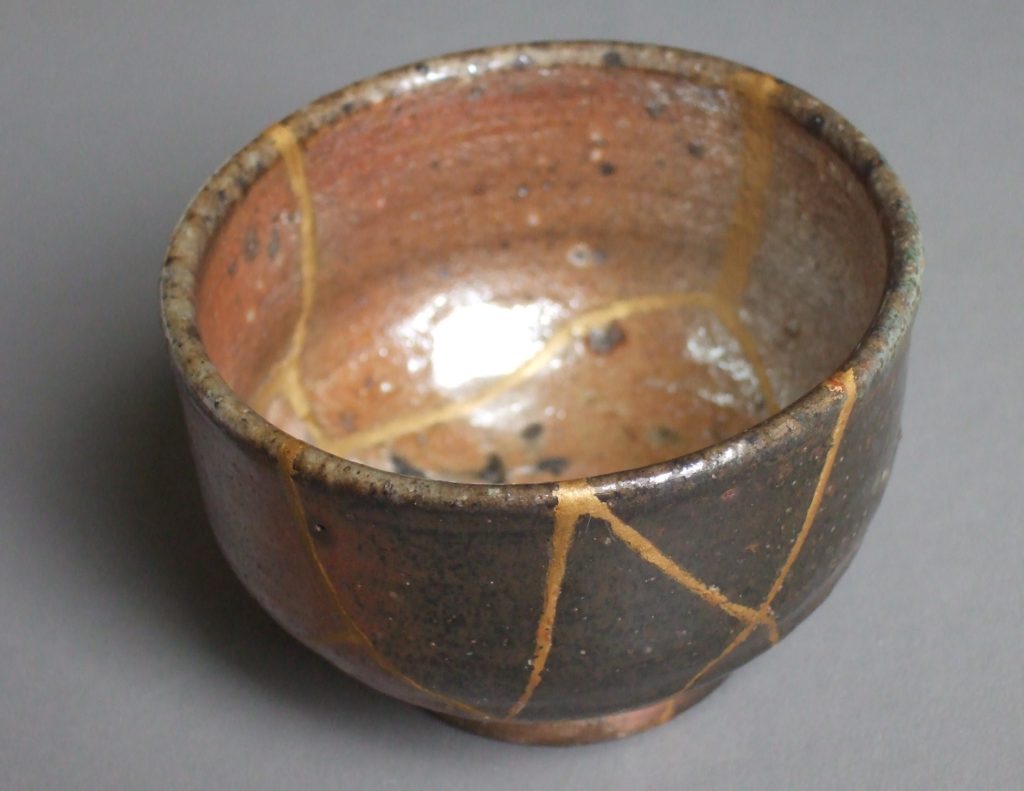
There’s a Japanese art form called kintsugi, which uses a process of mixing powdered gold with a lacquer in order to repair broken pottery & ceramics. I’ve long admired this form of art, as there’s something romantic in the idea of taking what’s broken & discovering beauty in what was once discarded, imperfect, flawed. One of my favorite novels is Henry James’ The Golden Bowl (great film adaptation released in 2000), which holds at its center a symbolic heavy crystal bowl that’s been decorated with gold overlay, & this bowl, which was once perfect, precious, & of great worth, has been purchased & gifted. The gilt hides a flaw in the crystal that only the keenest of eyes can detect, & it is this flaw that functions as an embodiment of the imperfection of human character & the almost imperceptible fissure within Prince Amerigo’s marriage to Maggie Verver. In a penultimate moment, Maggie dashes the bowl to the floor & the tiny crack in its crystal creates a fantastic shattering of the whole bowl upon impact, & she declares that she wants, even deserves, the bowl without the crack.
So, too, many of us have grown up striving for perfection, wanting the ideal & the dreamy dream. When faced with the chaos & disappointments of reality, we can become like Maggie, not wanting to settle, not wanting to admit that the perfect whatever-it-may-be could be simply impractical, unattainable, illusory, & intangible.
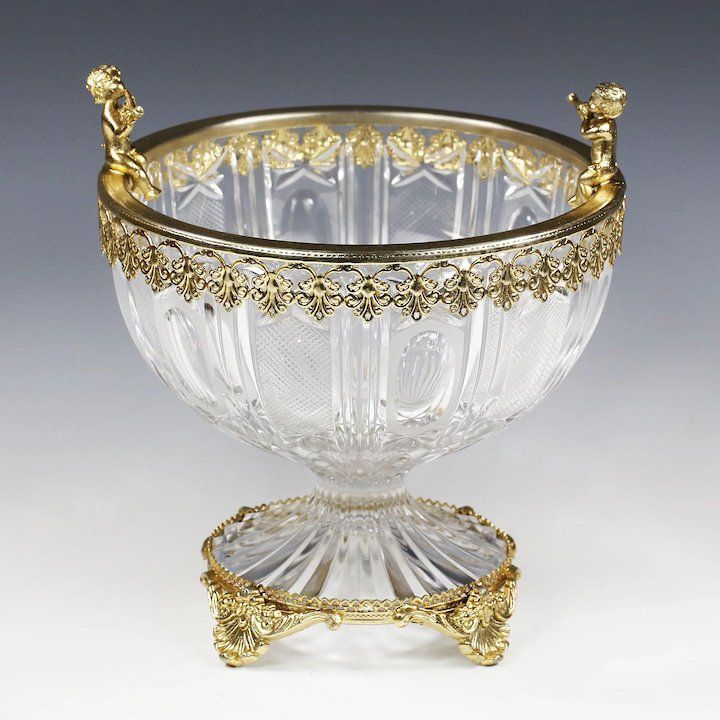
Growing up, I often thought that striving for perfection would be lauded, as even my mother would frequently recite the mantra, “Good, better, best. Never let it rest. Until your good is better & your better is best.” While the work ethic that mantra produces is a powerful one, & nobody can deny that I & my siblings were all taught to be hard workers, I’ve often struggled with this need to prove myself, to set the next goal… then, attain it… only to start working towards a newer, better, bigger goal. Even when I’d reach a major life milestone or goal, I’d so frequently forget to stop & take the time to savor the success, never really basking in the glow of satisfaction & accomplishment. Add to that my survival guilt from losing my closest brother, & you have a perfect recipe for a kind of gap, an absence, a lack in the center of being–much like that flaw in the golden bowl’s crystal. I remember the holes I’d dig into the sand at the beach; you know, the ones near the water’s edge which fill up with water & which then drain again. I’d engage in a Sisyphean struggle, bailing out the water, over & over, unable to stop the ocean tide. Yet, a ceaseless striving for perfection can feel like that futile cycle, a cycle which leaves one feeling less than or incomplete. Flawed.
As I find myself working towards the next goal, hoping that if I just manage to accomplish this thing, check the box, strike it off of my endless list, I am discovering, quite sadly, that nothing can really fill that gap, that absence, that lack, that feeling of discontent. There’s something about living that cannot exist apart from that dichotomy of absence & fullness, just like the Skeksis need the Mystics in The Dark Crystal (1982).
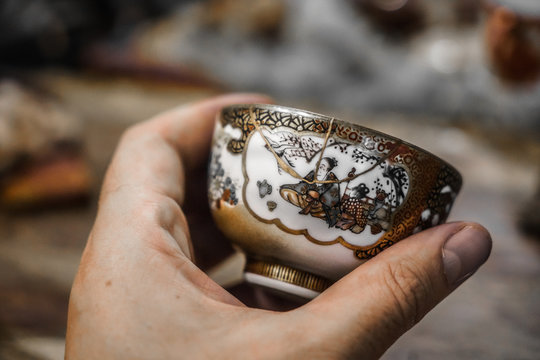
The actor-turned-director Sarah Polley has made a number of films that address the disillusionment of adult life, the most powerful of which for me has been Take This Waltz (2012). In describing why she made the film, Polley said, “I wanted to make a film about the concept of emptiness & about life having a gap it in,” & in an important scene, Sarah Silverman’s character, Geraldine, tells the protagonist (played by Michelle Williams), “Life has a gap in it. It just does. You don’t go around trying to fill it like a lunatic.” And I feel like this speaks to a kind of demystification of what maturity & aging brings to all of us as human beings. The magic & wonder of childhood, the age of dreaming & feeling like you have the whole world before you–those things seem to melt away when faced with career stress, paying bills, parenting, caring for aging family members, attending to accumulating health issues as you get older, & all of the other problems of the world that start to press on you. How many of us ever imagined living through a global flu pandemic, complete with quarantining & experimental vaccinations?
For me, I certainly never thought I’d experience something like what my grandfather lived through when he had siblings who died due to the Spanish flu, when his parents had to sneak out of the house to bury the bodies at night due to strict quarantining mandates. How could any of us truly think we’d be reduced to that same human frailty despite all of the miracles of modern medicine?
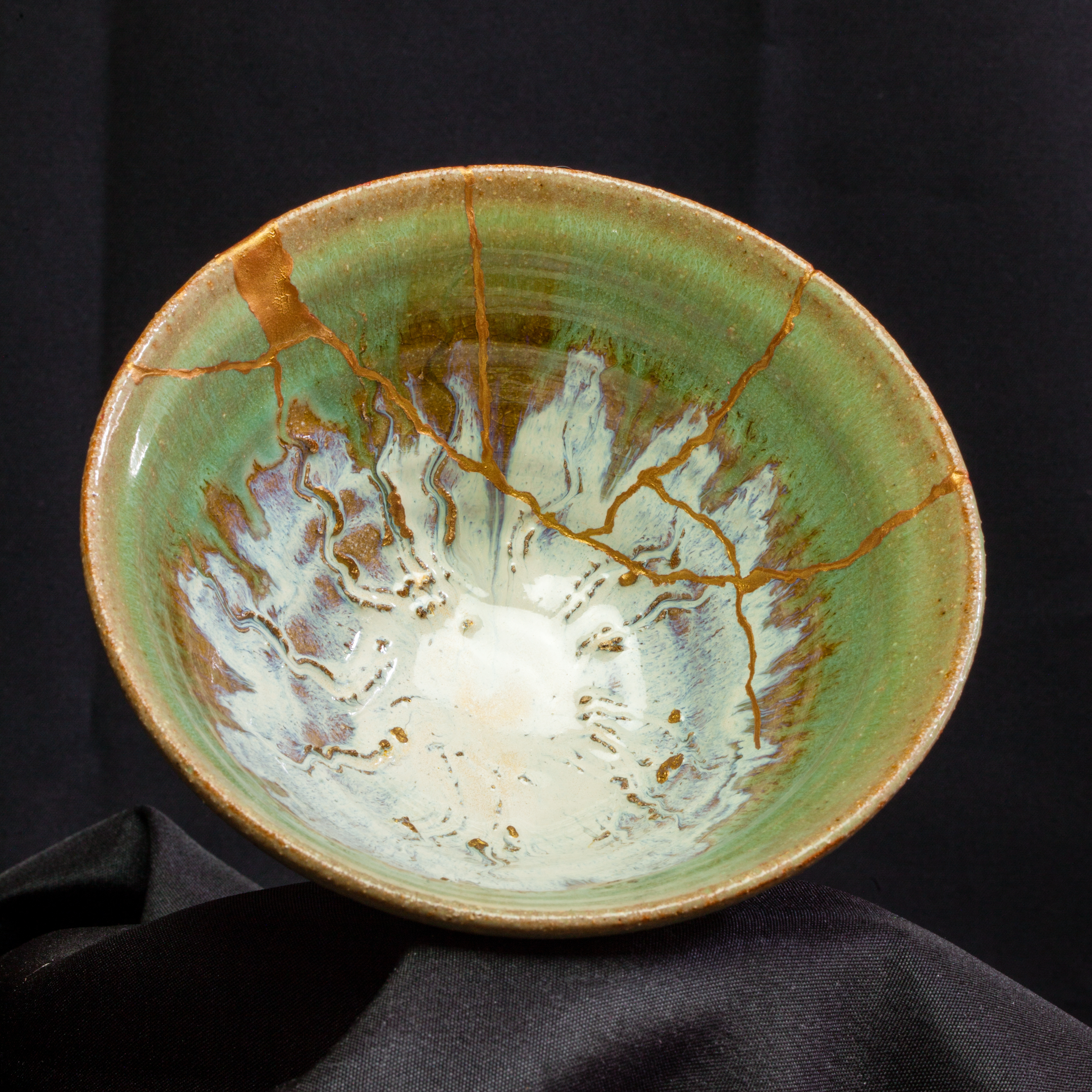
Thus, when I look at the art produced from kintsugi, I see more than just a process & a pretty object. I see a strategy for happiness, for finding happiness & contentment–even if those feelings only last for bouts or short periods. I think we all need as many tools as possible in our toolkits for finding happiness in our lives, especially as we get older. The times when I start to feel better about myself are those times when I realize that, like the ceramicist using lacquer & gold powder to repair cracked & fragmented dishes, plates, bowls, & cups, so too can I find & reclaim my losses & disappointments as something other than failure. Like the stone block withstanding the blows of the sculptor’s chisel, so too do our lives & development of character withstand the chiseling blows of loss, failure, rejection, & disappointment. If we hang in & hang on long enough for the full process of developing our newer forms of being, which spring from the very struggles I described earlier in this blog post, then we can see purpose in the fragmentation, the shattering of self, that struggle of knowing & understanding who we are & why we are. There’s hope to be found in our makeshift artistic repairs, much like the broken bone that mends & calcifies to become so much stronger at the original fracture site that the bone will never break in the same place twice.
Thus, I leave you, dear reader, with something to ponder: How will you take the fragments of yourself, those self-discovered & perceived flaws & fractures of your being, & mend yourself into an even more beautiful being or self? In your struggle to emerge from the chrysalis, you will discover a newfound, unparalleled beauty that results from that process of taking what’s broken inside you & making it even more beautiful than before, making yourself even more precious by the very flaws you tried to avoid or thought would devalue you or reduce you to worthlessness. You, yourself, can become a piece of kintsugi. Happy mending.

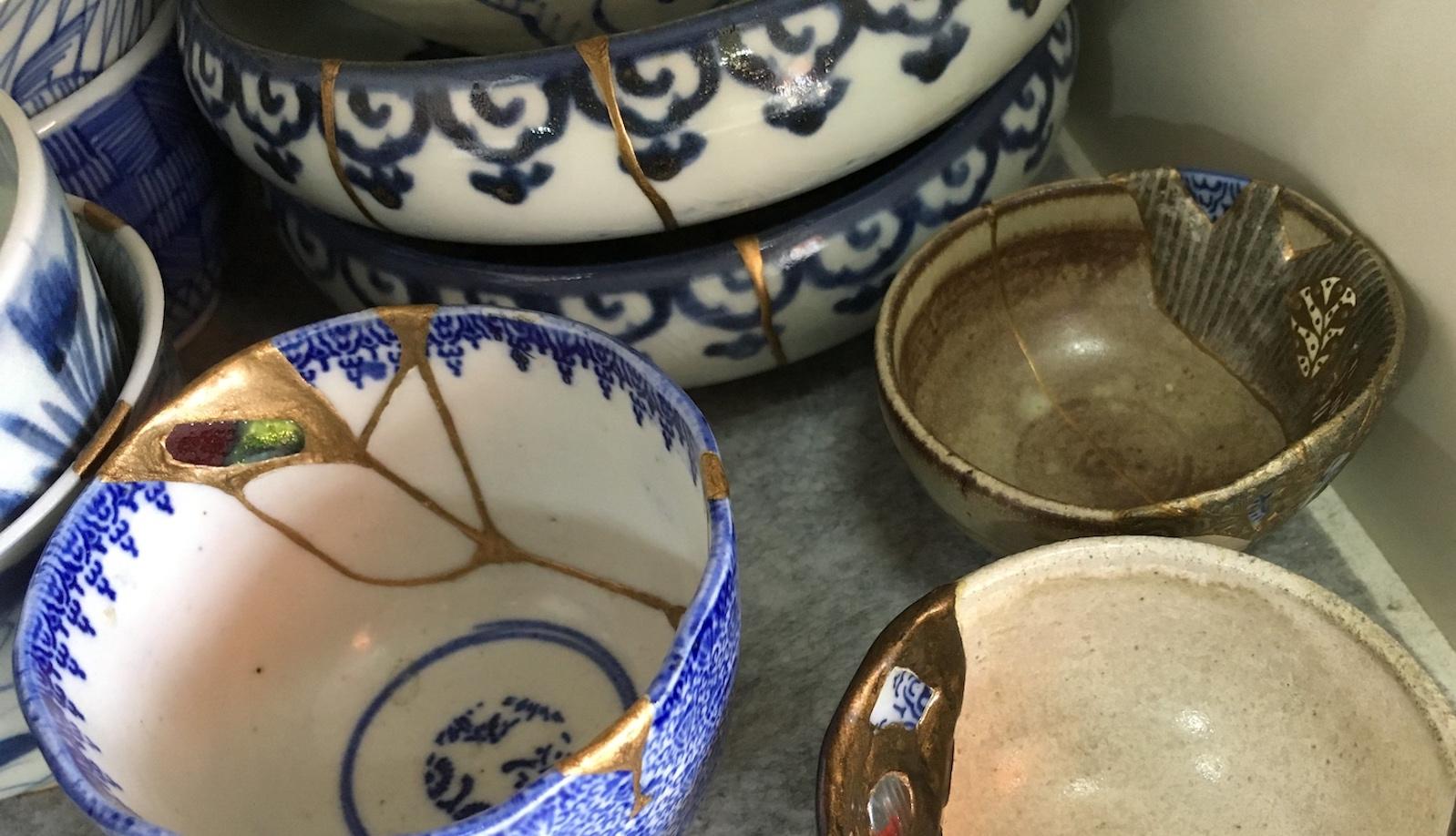
A beautiful tradition. Lovely images.
Yes, there’s a unique beauty to the craft. I’d love to learn how to do it.
I’ve played around with using resin and gold paint powder. Not exactly the same but it gives a similar look. I use the resin as glue, and as it is still tacky, apply the powder.
That’s really cool!
I appreciate your taking the time to read this!
Lovely post. You’ve given me lots to think about. Thank you.
Thank you for reading! You’re very kind.
Thank you for reading!
This is an excellent post! I tend toward perfectionism but have reined it in. I am a firm believer that a broken heart is necessary in order to appreciate the fragility of love. If we have never been broken we are much more reckless with the hearts of others… As for perfection, I see many people who are looking for a “perfect” mate instead of looking for a “perfect for them” mate. They are always looking even though there might be that special someone right under their nose.
So true.
Beautifully written, and so meaningful for the times we’re all living through, and for life in general!
Thank you for reading & for writing such kind feedback!
Nice! The art of acceptance what is and weaving it into life. Definitely an Eastern philosophy and a very realistic way of life. Everything is perfectly flawed. There is much to learn by contemplating and extrapolating this concept into living.
Love the idea of the perfect flaw!
Such a beautiful post
Thank you for reading!
I love the idea/purpose behind this art form. Actually, the golden lines of the mended pieces make the pottery more interesting-looking (to me, at least). To embrace the knowledge that we are works in progress, that mistakes happen, that flaws don’t need to be kept secret. Beauty can be found in the proof of struggles overcome — rather than something that stayed intact because it never had to deal with challenges.
What a wonderful, life-affirming post. ‘I am discovering, quite sadly, that nothing can really fill that gap, that absence, that lack, that feeling of discontent.’ – the nature of the material world, for sure. Some choose to quiet the mind of its incessant chattering, but that lacks something; the beauty of the mending gold perhaps. Thanks for that.
Thank you for visiting and following my blog! Perfection is overrated and probably doesn’t exist if one is honest.
Very meaningful and thoughtful.